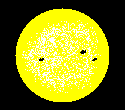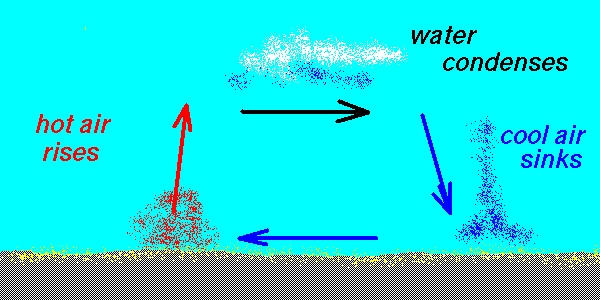

The spots are sunspots. We will discuss them shortly.

The photosphere looks like a sharp surface, but really there the gas
is just denser lower in the Sun, less dense higher up. The less dense
it is, the more transparent it is. The surface we see is where the gas
has become reasonably transparent. This layer is some 300 km thick.
The picture illustrates this. Imagine three of the yellow atoms emitting
light. In order for a photon to get out of the Sun, it must be going up
and it must avoid being absorbed by another atom. Thus the atom that emits
it must be in the less dense part of the diagram.

In a closeup view, the photosphere has a mottled appearance called
granulation.

The granulation provides evidence of convection on the
Sun. If you heat a gas from the bottom, the warm gas expands and
rises. This transports energy from the lower regions to the upper
regions. In this case, the gas can radiate into space when it reaches
the photosphere, This cools it and it sinks.

The convection cells on the Sun that make the granulation in the
photosphere are roughly 1000 km in diameter.

Roughly the same thing happens on Earth.

Davison E. Soper, Institute of Theoretical Science, University of Oregon, Eugene OR 97403 USA soper@bovine.uoregon.edu